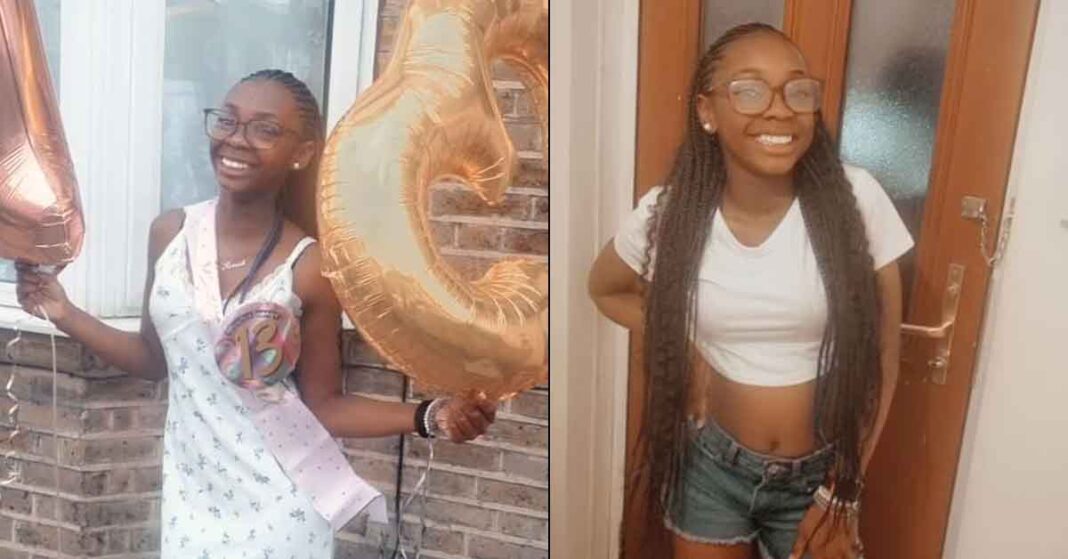An inquest is hearing testimony into the death of Hannah Jacobs, 13, who died from anaphylaxis after sipping a hot chocolate purchased from a Costa Coffee outlet in Barking, East London, in February 2023.
She collapsed at a pharmacy a short time later and was pronounced dead later in the day.
Her mother ordered two hot chocolates made with soy milk as Hannah had been diagnosed with allergies to milk, egg, fish and wheat when she was a toddler. According to a legal firm, the mom was careful to inform the barista of her daughter’s milk allergy.
The inquest heard that Hannah was administered an epinephrine auto-injector at the pharmacy, but it was a low-dose junior variety meant for young children. The pharmacy did not have adult-strength auto-injectors in stock that might have saved Hannah’s life.
A pharmacist from the Daynight Pharmacy in Barking stated there was a nationwide shortage of epinephrine auto-injectors.
Dr Tim Lightfoot, an intensive care consultant at Broomfield Hospital in Essex and deputy medical director at the London Ambulance Service, told the inquest the shortage had been exacerbated since Brexit.
He said:
“If anybody believes there is a severe anaphylactic response going on, use the adrenaline [epinephrine].
And call an ambulance as soon as possible because we can do so much more before cardiac arrest.
We would expect someone who collapsed [and had] an out-of-hospital cardiac arrest with secondary hypoxia to have a 5.6% chance of survival.
Hannah’s mother testified at the inquest that she ordered two soy hot chocolates and told staff of her severe milk allergy.
But the barista who took her order said she had asked for one ‘extra hot’ and one ‘normal’ hot chocolate, not specifying that they be made with soy milk but merely insisting that the milk jug be cleaned between making the drinks.
Carla May, a paramedic with the London Ambulance Service (LAS), told the court she arrived at the pharmacy six minutes after receiving the call.
She instructed a customer to continue administering chest compressions to Hannah and assessed the girl was in cardiac arrest in the first two minutes.
Assistant Coroner Dr Shirley Radcliffe read from May’s statement:
The patient was unresponsive. There was nothing obvious [in Hannah’s mouth]; vomit, blood.
At this point I confirmed that the patient was in cardiac arrest.
The patient’s mother started screaming as you started chest compressions.
You obtained the patient’s history from the mother… The mother said she and Hannah had gone to Costa to get a coffee.
‘[The mother] said she bought a drink for herself with dairy in it and one for her daughter without dairy in it.
Ms May said it ‘was not clear at the time’ what drinks had been ordered, and that it was ‘hectic’.
May questioned whether there was a possible mixup of the coffee cups in her notes.
Helicopter Emergency Medical Services (HEMS) staff arrived on the scene around 25 minutes after May arrived on the scene.
Hannah was given a total of nine epinephrine shots by paramedics who desperately tried to resuscitate the child, not including the low-dose epinephrine auto-injector administered by the pharmacist.
She was later transferred to Newham General Hospital, where she was pronounced dead around 1PM that afternoon.
Emily Slocombe, lawyer for the family, asked May whether she could have given Hanna epinephrine sooner. She replied: “It is impossible to move into administering adrenaline before others have arrived on the scene. It is not something I could have done on my own.”
As we did in the original story, we remind our readers that epinephrine is a lifeline when anaphylaxis strikes, but it must be administered quickly to have the best effect.
If you have been prescribed the drug, always carry two emergency epinephrine devices along everywhere, every time, and be sure to administer the first when you first suspect anaphylaxis.





